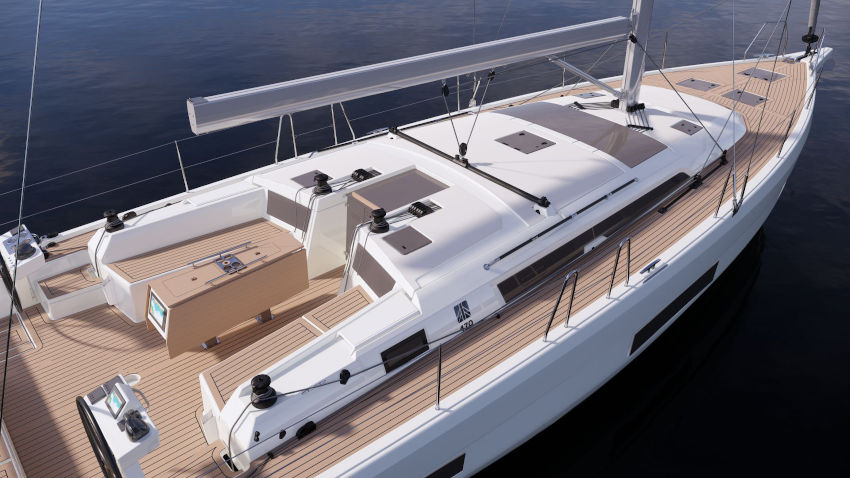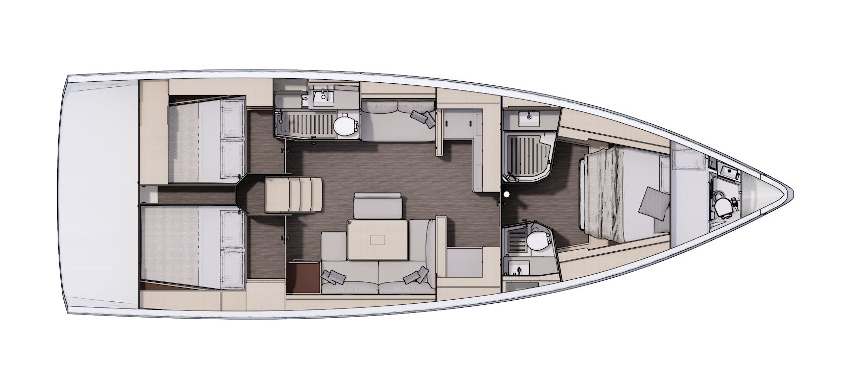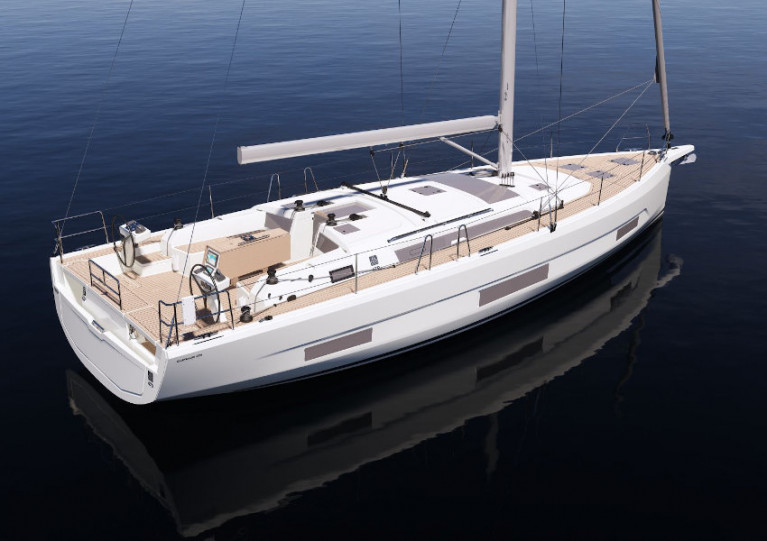Displaying items by tag: Dufour 470
Dufour 470 Launch Shows Off 'Enormous Cockpit' of New French Yacht Model
Recently launched in La Rochelle, the new Dufour 470 model will tour France and then Europe, as well as the United States, Australia and Asia in its worldwide launch.
"The 470 represents continuing advancements with the Dufour range of yachts", according to Irish agent Hugh Mockler of Crosshaven Boatyard who told Afloat "the cockpit is enormous and well thought out as is her interior".
 The Dufour 470 feels and looks like a 50 footer both inside and out
The Dufour 470 feels and looks like a 50 footer both inside and out
If not yet in the flesh, then Paris Virtual Nautic is the first opportunity at least to visit this new model thanks to an on-screen boat show environment using the Dufour virtual Marina interface launched last April, and now optimised with new features and layout choices.
Cork Harbour based Mockler also says of the new marque, "she feels and looks like a 50-footer both inside and out. Like her sisters, she is quick and easy to handle".
 Dufour 470 - cockpit is enormous and well thought out as is her interior
Dufour 470 - cockpit is enormous and well thought out as is her interior
Mockler also says her list of options are endless which means you have the opportunity to have her set up for easy cruising or for even more performance.
Delivery times are already moving rapidly into 2022, Mockler says.
Dufour Yachts ‘Covers Every Aspect Of Sailing’ With New Dufour 470
The new Dufour 470 is the shape of things to come from the French sailboat brand.
Set for her world premiere in the New Year at boot Düsseldorf 2021, the 470 balances contemporary design with Dufour’s iconic elegance and performance.
“The new Dufour 470 is another new departure for Dufour Yachts,” says Hugh Mockler of Crosshaven Boatyard, the Irish agents for Dufour Yachts.
“She looks fast and, like her 53-foot sister [the Dufour 530], she is available in three different variations, which covers every aspect of sailing.

The Easy version “is for the sailor that wishes to keep sailing simple. Her coachroof is clear of any obstructions with control lines coming back to the two winches at the helm”.
The Ocean version is suitable for the ‘traditional’ sailor who likes to do a bit of tweaking with winches on the coachroof and beside the helm, along with the mainsail traveller on the coachroof.
And the Performance version, Hugh says, is “for the sailor who wishes to have more performance and also likes do a bit of racing around the cans and still have all the comforts from home down below”.
Available with three-, four- and five-cabin options, with up to four heads and a front or side galley, the layout choices can accommodate larger or reduced crew numbers, sailing styles and comfort options.

The space below decks is flooded with natural light, especially in the generous aft cabins, and there is creative use of ambient lighting in the living areas.
Plenty of storage is available in both the saloon and cabins, with there is also an integrated bench sofa and separate table and seating area.
There’s more storage above decks, where you will also find an electronically operated bathing platform towards the stern, and a large cockpit area.
An exterior galley, with barbecue, sits between the two helm stations, while the cockpit table can seat up to eight guests.
“The Dufour 470 will certainly turn heads when she hits the water,” Hugh adds.
Get in touch with Crosshaven Boatyard to confirm your interest — call Hugh Mockler or Donal McClement on 021 483 1161 or 086 254 6123 or email [email protected]






























































